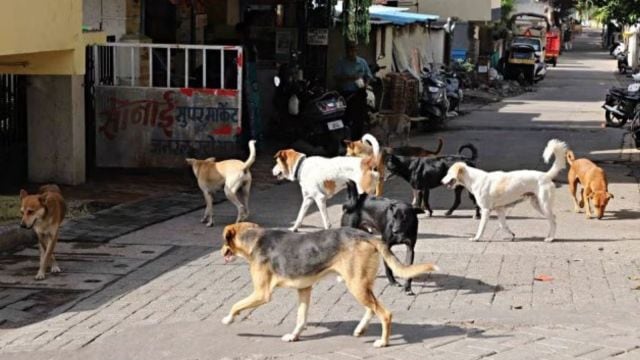As the Haryana government scrambles to comply with a Supreme Court directive to relocate all stray dogs in Delhi and parts of the National Capital Region (NCR) within eight weeks, Gurgaon and Faridabad—with stray dog populations of 50,000 and 30,447, respectively, as per 2024 government data—are likely to pose the biggest challenge for the authorities.

The Supreme Court on Monday directed the Delhi government, civic bodies, and authorities of Noida, Gurgaon, and Ghaziabad to pick up stray dogs and move them to shelters while noting that the “situation” arising out of the menace is “grim” and “immediate steps need to be taken” to address it.
In 2024, the Haryana government submitted a detailed report to the Punjab and Haryana High Court, documenting 2.14 lakh dog bite cases across the state over 18 months between 2022 and 2023. With 49,514 instances, Ambala district topped the list, which also included several NCR districts like Faridabad (12,939), Rohtak (25,467), Jhajjar (13,947), Panipat (22,331), and Jind (16,447), highlighting the urgency of addressing the stray dog crisis through coordinated urban planning and public health measures.
In Gurgaon, authorities have identified 14 common feeding spots where members of the public regularly feed stray dogs, while Faridabad has 162 such locations. Yamunanagar has 200, and Sirsa has 50 designated spots for public feeding of stray dogs, officials said.
According to officials, Gurgaon currently has two dog-catching vans, while in Panchkula, the municipal corporation has opened a kennel house with a capacity of 1,000 stray dogs in Sukhdarshanpur village.
In March this year, Opposition legislators raised the issue of stray animals prominently in the Haryana Assembly, with senior Congress leader and Thanesar MLA Ashok Arora alleging that “there are no vaccines to treat persons suffering from dog and monkey bites”.
Story continues below this ad
Responding to the concerns, Urban Local Bodies Minister Vipul Goel stated, “There are legal hurdles in shifting stray dogs from one place to another, so they are only sterilised. Nearly 30,000 dogs have been sterilised over the past year and a half. This campaign will be further intensified.”
Following the Supreme Court’s tough stance on the issue, authorities may now intensify efforts to establish more shelter homes for stray dogs.
‘SC directive not feasible’
Animal lover Umang Sheoran, who runs a shelter home in Billa village of Panchkula district, says the Supreme Court directive is “not a feasible solution”. “Shelter homes for all stray dogs need a budget of crores. Otherwise, all dogs should not be picked and relocated to the shelter homes,” she said.
“Those dogs which are aggressive and where such symptoms are emerging that they are aggressive, can bite or attack someone—they need rehab. When they show improvement and their aggression reduces, they can be released back into society. But confinement of all stray dogs is unfair,” she added.
Story continues below this ad









